 They say variety is the spice of life. If you listen to the same song on repeat, you’d get bored pretty quickly. Similarly, serve up the same leftovers night after night and pretty soon you’ll be craving to try something that’s different.
They say variety is the spice of life. If you listen to the same song on repeat, you’d get bored pretty quickly. Similarly, serve up the same leftovers night after night and pretty soon you’ll be craving to try something that’s different.
The same thing applies with your study. The secret to staying motivated and learning information effectively is to mix things up. Try different strategies from time to time.
Instead of just reading your book over and over again or drawing dozens of mind maps (my preferred study method), see how you go testing out the following:
1. Visualise information in bizarre ways
When it comes to learning boring dry information you want to visualize it in a way that is completely absurd. If you sketch out the crazy image, it will help to further embed the information into your brain.
Let me explain why you’d want to do this.
Picture a gorilla playing the drums to Phil Collins song “In the air tonight”. It’s a pretty bizarre image, right? This was one of Cadbury’s ads (see below). Cadbury is known for producing a range of bizarre ads.
Why do they do it? Because strange, weird things stick in our minds.
2. Change your study environment
Want to retain more information? Then don’t just study in the same place (i.e. your room).
Research has found that it’s best to study in multiple environments. The experiment involved getting students to study in either two different rooms (one with no windows and cluttered and the other with a view of a courtyard) or in one room. Here’s what they found – the students who studied in the two different rooms did better on a test than those who studied in the same room.
In a nutshell, changing your environment appears to slow down forgetting.
3. Hop on YouTube or TED.com
 Push your text books to the side and for 20 – 30 minutes see if you can find some interesting videos online by credible experts on the topic you are studying.
Push your text books to the side and for 20 – 30 minutes see if you can find some interesting videos online by credible experts on the topic you are studying.
Perhaps the author of the book you are reading has created some interesting YouTube videos or an expert has delivered an engaging TED talk or lecture.
Give your eyes a rest from reading. See how much you can learn in a short space of time from devouring a few short videos.
4. Teach a friend (or a wall)
The best way to learn something is to teach someone else the information. One study found that when students had to teach others some information, they worked harder to learn that information, learnt the information at a deeper level and did better on tests than other students.
Obviously teaching a real person is always best because they can give you feedback and ask you questions (which will really test how well you know the information). But if you don’t have anyone to teach, that’s OK. One student I was working with explained concepts to her wall as if it was a person. She said this strategy worked well for her!
5. Create a little golden books on your subject
 Do you remember little golden books? I had a stack of these simple story books when I was a child.
Do you remember little golden books? I had a stack of these simple story books when I was a child.
Challenge yourself to create a little golden book on a topic you need to study. In other words, jot down what you know about the topic in such a way that an 8 year old would understand it. It doesn’t have to be neat or perfect. You just have to do it.
Forcing yourself to get out the ideas in your own words with some pictures will help to deepen your understanding of the content.
Share This:
• Highlight or underline your books?
• Test yourself with flash cards?
• Create notes?
• Make an outline of the key topics?
• Reread your books and/or notes?
These are all popular study strategies and exam revision techniques. But how effective are they? And could you do them better?

In their paper, cognitive psychology researchers Miyatsu et al (2018) examined how students can optimise the use of the following five study strategies:
1. Note-taking
2. Rereading
3. Marking (Underlining or highlighting)
4. Outlining
5. Flash cards
Do you have a tendency to write down word for word what the teacher says?
It’s best to summarise or paraphrase the information. Put it in your own words.
Do you prefer to take notes with pen and paper or on a laptop?
Taking notes by hand is best.
Why? Because you can’t write as fast as the teacher speaks, so you’re more likely to capture the information in your own words.
But when students take notes on a laptop they usually can type as fast as the teacher speaks. So what happens is you get a word for word script of what the teacher said. The problem is you don’t remember as much of the information when you take notes this way.
But regardless of whether you take notes by hand or on a laptop …
Don’t let your notes just sit there. Work with them. Transform them into pictures and flash cards. Scribble questions and other ideas all over them.
If I need to commit information to memory, I always do one or more of the following:
• Mind map out my linear style notes
• Put key points onto flash cards
• Transform them into practice tests
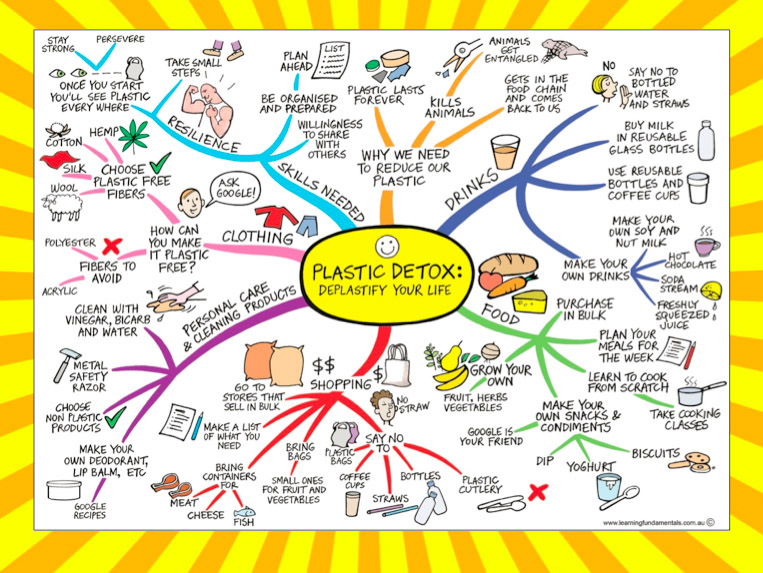
Miyatsu et al (2018) state:
“Reviewing is crucial in reaping the full benefits of note-taking.”
Remember, your notes are pretty much useless unless you review them.
I’m not a fan of reading passively.
If I’m reading complex information, I block out distractions (e.g. turn off music and put my phone in another room) and I draw pictures as I read. When I read this way, there’s usually no need to reread.
But if you reread passively (e.g. no drawing), try doing the following to make the ideas stick:
Space out the first and second reading by a few days. Research shows this produces more durable learning.
Before rereading, try doing retrieval practice. Retrieval practice is when you force yourself to bring information to mind (without looking at your books and notes).
Retrieval practice has been identified it as the number one study strategy. Use retrieval practice and you’ll dominate your subject areas.
1. Use a blank piece or paper or a whiteboard to write down all the things you can remember on the topic.
2. Try explaining to a friend, the wall or a pet what you can remember on the topic.
3. Use flash cards to test yourself.
Tip: It’s okay to retrieve the wrong information, just as long as you correct yourself.
So make sure you check to see that you are retrieving the correct information. It’s critical!
This isn’t a good study strategy to use. It gives you a false sense of confidence. You think the information has transferred from the page into your brain, but usually it hasn’t.
But if you really must highlight, you need to exercise some serious restraint with yours pens.
Read a section of the text first to get a sense of the important ideas (no pens allowed). Only after you have read the section are you allowed to underline the key ideas.
Personally, I think it’s more effective to draw pictures in the margins or on a blank sheet of paper as you read.
Please don’t make highlighting or underlining your only study strategy. As the Miyatsu et al (2018) state:
“Marking should not be students’ only preparation method for higher-order assessments.”
You know how your books have a contents page? Outlining is where you create a contents page for a subject.
Do you have a syllabus or unit outline for each of your subjects? If you do, check the unit content section. Boom! That’s your outline.
Don’t have an outline? Create one for a subject/topic. This will give you a sense of the key ideas and how they are structured.
Here’s another way you can do retrieval practice using an outline …
Use your outline to test yourself.
Go through each topic and see how much you can remember (“What do I know about Maslow’s Hierarchy of Needs?”).
Get easily overwhelmed by a long list of topics? No problem!
Simply use a blank piece of paper to cover up the topics. Then proceed through the topics, one by one, shifting the paper down the page as you successfully bring to mind information on each point.
If you use flash cards correctly, this is a great way to do retrieval practice.
Use your flash cards to test yourself.
But here’s the thing: don’t just read the question and then flip and read the answer straight away. Try bringing the information to mind before you flip the card over.
It’s tempting to want to drop a card when you get the answer correct (“I know that!”). But hold onto that card. Keep it in your pile of flash cards. Only drop a card after you have successfully retrieved the correct information at least three times. Remember, the aim is to strengthen the information in your mind so you can easily recall it later on.
While you’re at it, space out your practice. Go through a pile of flash cards and then take a break before practicing them again (my recommendation is to wait at least 24 hours).
Continuously drilling your flash cards is not an effective way to study.
After completing a set of flash cards, go outside and get some fresh air, make yourself a smoothie, etc. Do something good for yourself. Your brain deserves a break.
Note: For learning more complex information, flash cards may not be the best strategy to use. I prefer drawing the information out first and then creating flash cards for key concepts on the mind map.
So there you have it! Various ways to optimise five popular study strategies.
Just remember, if you want to save time and elevate your studies, you are better off using strategies that have been found to be highly effective (click here to read more about highly effective study strategies).
But if you’re in the habit of using the popular strategies mentioned above, that’s okay! Why not make some small tweaks and try adding some more effective strategies into your study routine?
While they may not feel as good and easy as highlighting, they will certainly fast track your studies and boost your performance.
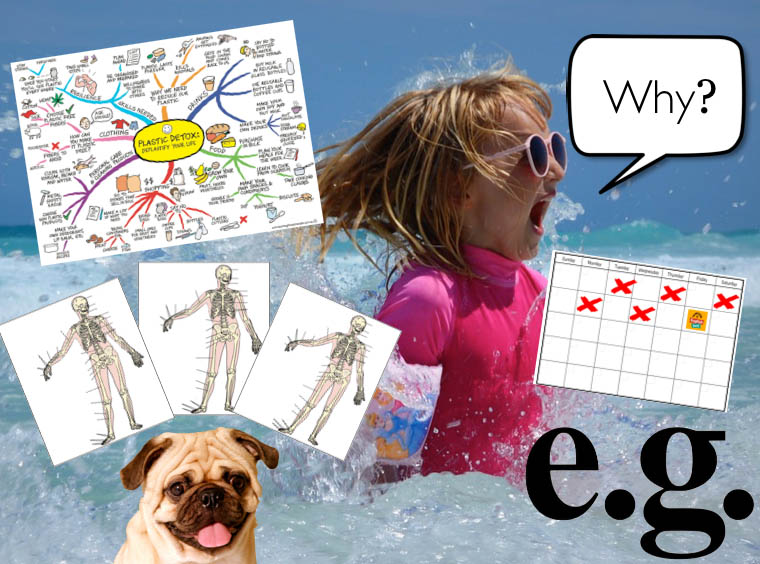
If you want to achieve solid marks at school, you need to be strategic. Ditch your highlighter pens. Stop re-reading your books and notes. These are incredibly boring and passive ways to study. You need new study strategies.
Dual coding is when you use both words and pictures to learn information. This gives you two ways to learn the information (via the words and the pictures).
Here are some different ways you can dual code when you study:
Is the picture conveying something that the text isn’t?
Think this strategy is only for visual learners and artistic types? Think again. Dual coding has nothing to do with learning styles and being a visual learner, which some people argue is an educational myth. Dual coding is for everyone.
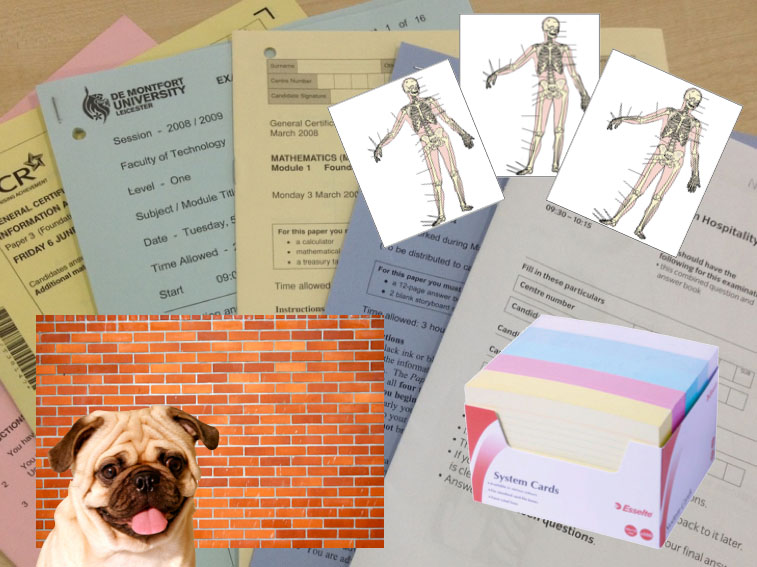
Without looking at your books and notes, try to recall the information. Ask yourself, What did I study in human biology yesterday? Force yourself to get the information out of your brain.
The simple act of bringing information to mind helps to reinforce it in your brain.
You see, it takes effort to transfer information into your long-term memory. You don’t just hear information once in class and … BOOM! That information stays in your brain forever. Sorry, it doesn’t work like that.
We are incredibly forgetful so we need to revisit the information to help cement it in our brains. Retrieval practice is the best way to do this.
Let me make one thing clear: Retrieval practice is not the same thing as repetition.
Repetition is easy (you just read the information over and over again). But retrieval (forcing yourself to bring specific information to mind) is hard. It strains your brain. But it’s a good kind of muscular strain.
Just like it’s good to push your body at the gym, retrieval practice is the ultimate workout for your brain. It will help shift information into your long-term memory so you can access it when you need it.
Here are some different ways you can practice retrieval:
When you get to the point where you can’t recall anything else, that’s when it’s okay to take out your books and your notes. Check for any mistakes and gaps in your knowledge.
As Dr Barbara Oakley says:
“Getting clear on what you don’t understand is 80% of the battle.”
It’s also important to know that you’re retrieving the correct information (otherwise, you’ll be reinforcing the wrong stuff!).
If you’re consistent with your retrieval practice and incorporate it into your study sessions, you’ll see dramatic improvements over time.
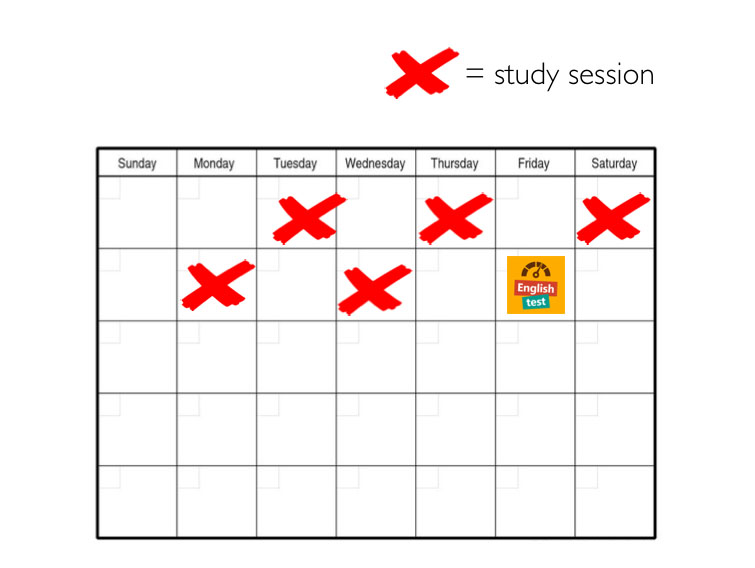
Rather than doing 5 hours of study right before your exam (i.e. cramming), it’s much more effective to space out those 5 hours of study over 2 weeks. You learn more by spacing out your study.
Now if you’re used to the cramming approach, spreading out your study over 2 weeks will probably feel strange at first. It will require a little planning. But the more you do this, the easier it gets. Before you know it, it will become a habit.
When you sit down to do spaced practice, keep in mind you only need to do 15-20 minutes of study before taking a break (not hours and hours of study).
The spaced practice approach usually means you’ll:
Why? Because you won’t need to stay up late or pull an all-nighter to study for your test or exam.

Have you ever spent time with a 4-year-old child? If so, you’ll notice they ask Why? a lot. It’s this natural curiosity that makes 4-year-olds like sponges, soaking up information from absolutely everywhere.
When you sit down to read your textbook, you want to ask Why? and How?
Ask questions such as:
Asking questions will help you to stay engaged with the material.

For some subjects (e.g. economics and psychology) you’ll need to learn lots of definitions of abstract ideas and concepts. If you’re like most students, you probably memorise these definitions by repeating them over and over again.
But if you do this, two things are likely to happen:
1) You’ll probably feel like a robot; and
2) You won’t fully understand the concept, which will make it hard to remember.
We can get ideas on how to learn definitions more effectively by looking at how professional actors learn their lines. Professional actors don’t learn their lines word for word. Instead they try to understand the character’s motivations and needs. Gaining a deeper understanding of these factors helps the actor to learn their lines more efficiently.
Similarly, gaining a deeper understanding of an abstract concept will help you to learn and memorise it. So the question is, what is going to help you to deeply understand the abstract concept?
Good examples. And lots of them.
Whenever you have to memorise an abstract concept, collect as many different examples as possible. Get examples from your teachers, from your textbooks, etc. Plaster those examples over your wall and in key locations in your house (e.g. on the mirror and fridge).
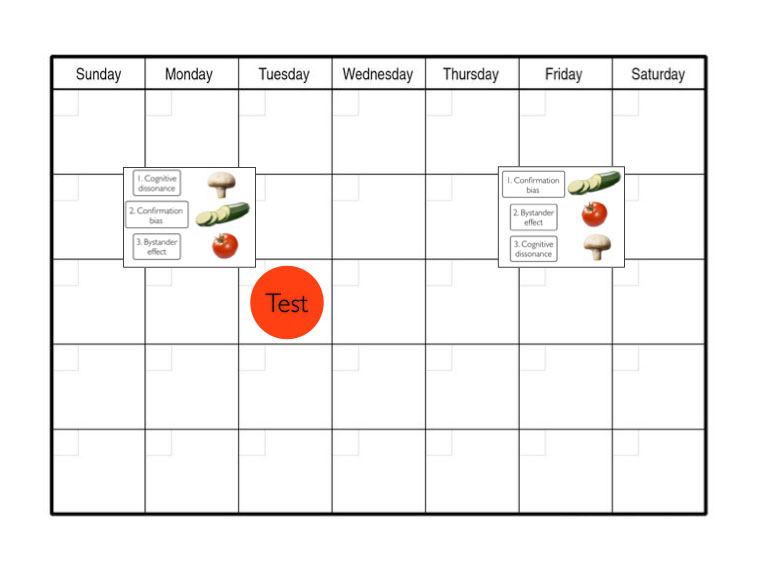
a) Ideas
If you were going to a barbeque, you wouldn’t bring along veggie kebabs that only contained zucchini on the skewer. That would look cheap and nasty! One of the joys of kebabs is the variety of vegetables (e.g. tomato, onion, zucchini, capsicum). So you’d want to mix things up to make the kebabs appetising.
The same thing applies with your studies. Don’t just study one concept for a long period of time. Mix things up. Study one idea and then jump to another concept in the same subject.
For extra bonus points, you could pretend to be 4-years-old and ask yourself, How are these two ideas similar? and How are they different?
b) Location
Don’t always study in the same place. Sometimes study in a quiet café, a library or at the kitchen table. Research has found that changing your surrounding environment slows down forgetting and enriches learning.
7. Take notes by hand

Want to remember more information? Ditch your laptop and work with pen and paper.
A study called The pen is mightier than the keyboard found that students retained more information when they took notes by hand than when they took typed notes on their laptops.
When you take notes on your laptop, you tend to write word for word what the teacher is saying. This is because you can type at the same speed the teacher is speaking at.
But when you take notes by hand, you can’t write as fast as the teacher speaks. This forces you to put the information in your own words. This makes it easier for you to understand the information, which explains why you tend to remember more of it.

Why is it that some people with dementia can’t remember the names of their friends and family, but they can remember the lyrics to hundreds of songs?
It’s because music touches many different regions and lobes of the brain, which helps to cement the lyrics into our brains.
This makes music an incredibly powerful learning tool. Certain types of music can motivate you to study and complete tasks that you typically perceive painful and would prefer to avoid doing.
But more importantly, music can also help you to learn important concepts.
Jump on YouTube and you’ll find a range of educational songs (check out the circulatory song Pump it up! and this quadratic formula song. You can even learn how to make a lasagna with music.
Here are some ideas on how you can use music to help you study:
Have some fun and use humour wherever possible.

Working on a difficult problem? Feeling stuck? Then take a break. Allow your brain to go into what Dr Barbara Oakley calls the ‘diffuse mode’ of thinking.
In the diffuse mode, you relax your attention and allow your mind to wander. Let your subconscious mind do the work for you.
You often hear stories of famous scholars coming up with groundbreaking theories while relaxing under an apple tree, going for a walk or having a shower. In these diffuse mode states, their brains are still working away on the problem, which ultimately leads to these ‘Eureka!’ moments.
Some activities that will help you to enter the diffuse mode of thinking are:
It may seem like you’re wasting time in the diffuse mode but you’re not. Your brain is still working quietly in the background on the problem, even though you’re not actively focusing on it.

Okay, so this isn’t exactly a specific study strategy but it’s critical to all of the strategies listed above. You see, when you sleep, your brain doesn’t just turn off. The opposite actually occurs. Your brain gets busy doing the following:
This is why going over important information before you take a 90-minute nap or go to sleep at night can be beneficial for learning. Your brain is more likely to rehearse this information and strengthen it while you sleep.
Most importantly, it’s critical that you get a solid 8-10 hours of quality (undisturbed) sleep each night. If you’re sleep deprived, these effective study strategies cease to be effective.
Getting sufficient sleep will ensure that you can concentrate and recall information more easily in your tests and exams. So if it’s approaching midnight and you’re thinking, Maybe I can squeeze in another hour of study … think again. Always prioritise sleep over study. Your brain will thank you for it the next day.
To get maximum benefit from these ten study strategies, you need to be able to focus when you use them. Why? Because distraction is the enemy when it comes to learning information. If you’re trying to study complex information while checking your phone and watching a Netflix series, you’re wasting your time.
So before you sit down to study, deal with any potential distractions. Do this …

Turn your phone off. Place it in another room far, far away. Close your bedroom door so you can’t be disturbed.
The aim of the game is to form effective study habits. This isn’t hard to do and it’s never too late to give it a shot. It just takes practice, perseverance and being willing to try something new.

This is the number one question I get asked by students.
Students want to know the exact numbers (e.g. 1, 2 or 3 hours).
Well, I’ve thought long and hard about this question and I’ve come to the following conclusion:
Focus on the quality of your study (not the quantity of study).
Sure, I know one school advises students to engage in 20 minutes of study per subject every day. Another school recommends 3 hours a night, plus 8 hours over the weekend …
So I could easily just tell you, Study for 3 hours every day! but that doesn’t sit right with me.
When I was in high school, I’d re-read my books and highlight my notes for 3 hours after school. I’d tick the 3 hour study box. Boom! Done! Finally, I can relax!, I’d think.
But after completing 3 hours of study, how much had I actually learnt?
How much of the content did I actually understand?
I didn’t realise at the time but my study strategies were totally ineffective.
So even though I could tick the 3 hour study box, I hadn’t managed to achieve much in that time.
We’re either:
A) not studying effectively;
B) just faffing around (i.e. multitasking); or
C) a combination of A and B.
When you study ineffectively and/or faff around for 3 hours, you’re wasting time you’ll never get back.
Let’s not overlook the fact that thinking you have to do a huge chunk of study can totally throw you off course. It can lead to procrastination and study paralysis.
The thought of three hours of study is simply too overwhelming for a fatigued brain that’s already spent 6-7 hours at school. Consider that after school your frazzled brain is thinking:
You want me to do another 3 hours on top of that? You’re dreaming!
With a fixed 3 hour study rule, you run the risk of falling into the trap of all or nothing thinking.
Last year I was setting up for a school presentation when I overheard a student say:
I’ll either do the 3 hours of study and if I think I can’t then I think ‘Why even bother?’ So I just sit there and look at the wall.
I wanted to say to this student:
Please don’t stare at the wall. Do something. Even just 15-20 minutes.
Sometimes we can forget that doing something is always better than doing nothing.
This is why I recommend you create your own set of study guidelines. These will be guidelines that motivate you to study (and not have you staring at the wall for several hours).
Yes, you still need to study those painful subjects. The reality is studying is the only way you’ll effectively encode information (i.e. move information from your working memory to your long-term memory).
But the focus needs to shift from quantity of study to quality of study.
Not sure what quality study looks like?
Here are some examples:
The great thing about taking the quality study approach is that you learn and understand more in less time. This means more free time for you to do fun stuff.
If you choose to engage in quality study (i.e. you use effective study strategies and eliminate distractions from the outset), you’ll save time, feel less stressed and more in control of your studies.
So if you find yourself thinking Why should I even bother if I can’t do 3 hours of study?, remind yourself that doing some quality study (even just 25 minutes) is better than 3 hours of faffing around. All those small chunks of quality study add up to something really solid.
Take a moment to think of one small action you’ll take today to improve the quality of your study sessions. Feel free to post what you plan to do below!
Dr Jane Genovese delivers interactive sessions on learning to learn, combating procrastination, exam preparation, how to focus in the age of distraction, habit formation and much, much more!
Get FREE study and life strategies by signing up to our newsletter:
© 2024 Learning Fundamentals